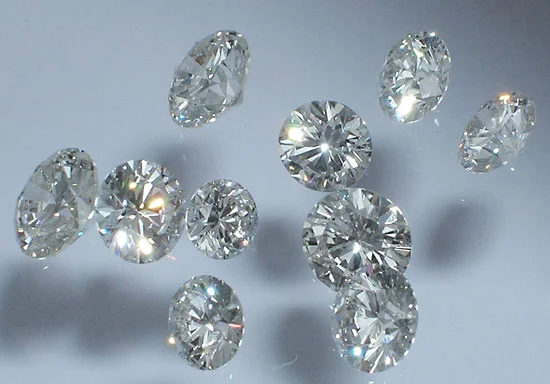Lab Diamonds for sale in Zionsville
Lab Diamonds are tremendously popular, we offer the largest selection in Zionsville.

Lab Diamonds for sale tap here
Are lab diamonds real diamonds?
Yes, lab grown diamonds are chemically identical to naturals. The biggest difference between lab grown stones and natural, earth made gemstones is their formation process. While natural diamond crystals are created deep in the earth, lab made gems are “grown” in a controlled laboratory setting. These lab gems have the same visual and chemical components, making them identical to natural stones.
Are lab created stones flawless?
Just as with natural diamonds, there are variations in gemstone quality among lab gems for sale. Though lab gems are made in controlled settings, each gemstone will have its own features in terms of quality.
Can You Tell the Difference Between a Lab-Made stone and a Natural?
By looking, there’s no way to tell the difference between a lab-made diamond and a natural one. There are two clues you could look for.
With a loupe, try to find a tiny laser inscription on the girdle — the widest part of the diamond that forms its outline when you look at it from the top. See if you can read it. Many factory diamonds have an inscription that identifies them as created.
Diamonds can also have a gemological lab report number inscribed on the girdle. If you go to the laboratory website, you can enter this number to get the report, which will tell you whether the stone is mined or lab-grown, along with plenty of other information.
If there’s nothing on the girdle, only a major gemological laboratory can tell you whether the diamond is mined or created.
Can a Diamond Tester Detect Lab Gems?
Factory stones have the same thermal and electrical conductivity as naturals. So, they will pass a diamond tester exam.
Can a Jeweler Tell the Difference Between Lab-Made and Mined Diamonds?
Since a lab-grown gem appears identical to a natural stone, most jewelers won’t be able to tell the difference. (Assuming, of course, that the diamond has no girdle inscriptions). However, jewelers who are also trained gemologists may be able to tell whether a diamond is synthetic with the aid of a powerful microscope. Still, the only way to be certain is to send it to a gemological laboratory.
How are Lab-Grown Diamonds Made?
Two processes can create jewelry-quality diamonds: HPHT and CVD.
HPHT stands for High Pressure/High Temperature. This process mimics the way that diamonds grow in nature, subjecting carbon to high temperatures and pressing it together. This costly method requires a lot of energy.
CVD stands for Chemical Vapor Deposition, and it’s not as scary as it sounds. In this process, a mixture of hydrogen and methane gas is placed in a chamber with a seed crystal. Typically, microwave power heats the chamber to a high temperature, which excites the gas. The diamond grows on the seed crystal. The CVD method is cheaper than HPHT and has become more common in recent years, as new technology has made higher-quality diamonds possible.
Isn’t it “Cheap” to Buy Lab-Grown Diamonds?
Some people feel that lab-made gems are inappropriate for an engagement ring because they’re “cheap.” Others say that a diamond is a diamond, whether it came from the ground or a laboratory. Still others prefer lab-made stones over mined diamonds for ethical and environmental reasons.
Not too long ago, a majority of consumers considered lab-made diamonds “cheap.” However, attitudes are rapidly changing. About ⅔ of people aged 21-40 who are shopping for an engagement ring are now willing to consider lab-grown diamonds. Due to natural diamond sticker shock, that’s not too surprising. Lab-grown diamonds average about 30-40% of the price of comparable natural ones. Plus, they look the same. With lower prices and guaranteed ethical sourcing, a lab-grown gem is a practical and guilt-free alternative.
